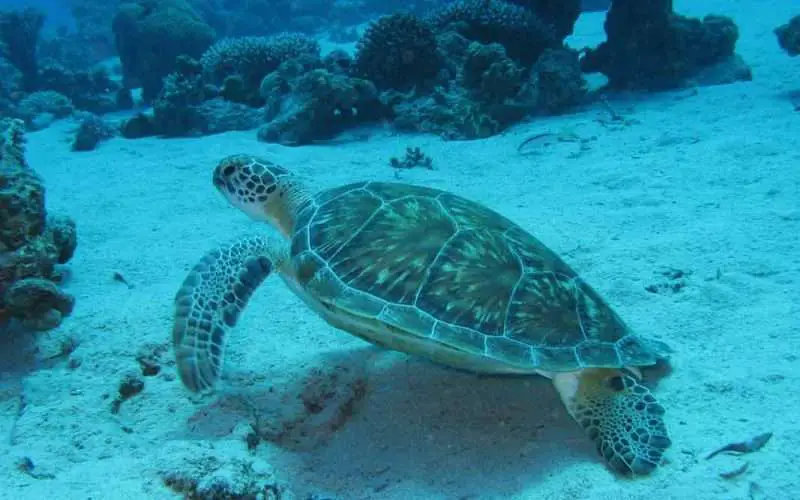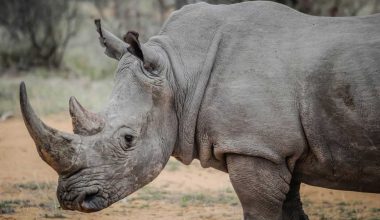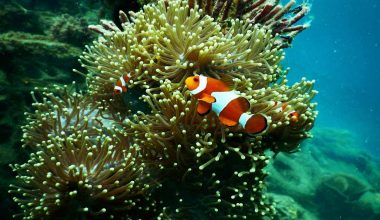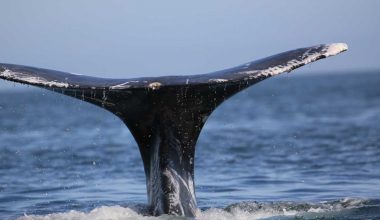Table of Contents Show
Why Are Sea Turtles Endangered?
Globally, loads and loads of sea turtles every year are inadvertently trapped in shrimp trawl nets, fishing gill nets, and longline hooks. All turtles have to get to the surface of the water to breathe, and so many drown once trapped.
Loggerhead and hawksbill turtles are most defenseless. Almost all species of sea turtles are categorized as endangered. They are slain for their eggs, meat, skin, and shells. They further experience habitat loss. Climate change has an effect on their nests. As fishing activity increases, we should take a serious look at the conservation of this lovable animal.
Endangered Marine Turtles
The International Union for the Conservation of Nature (IUCN) includes seven sea turtles in the Red List of Threatened Species.
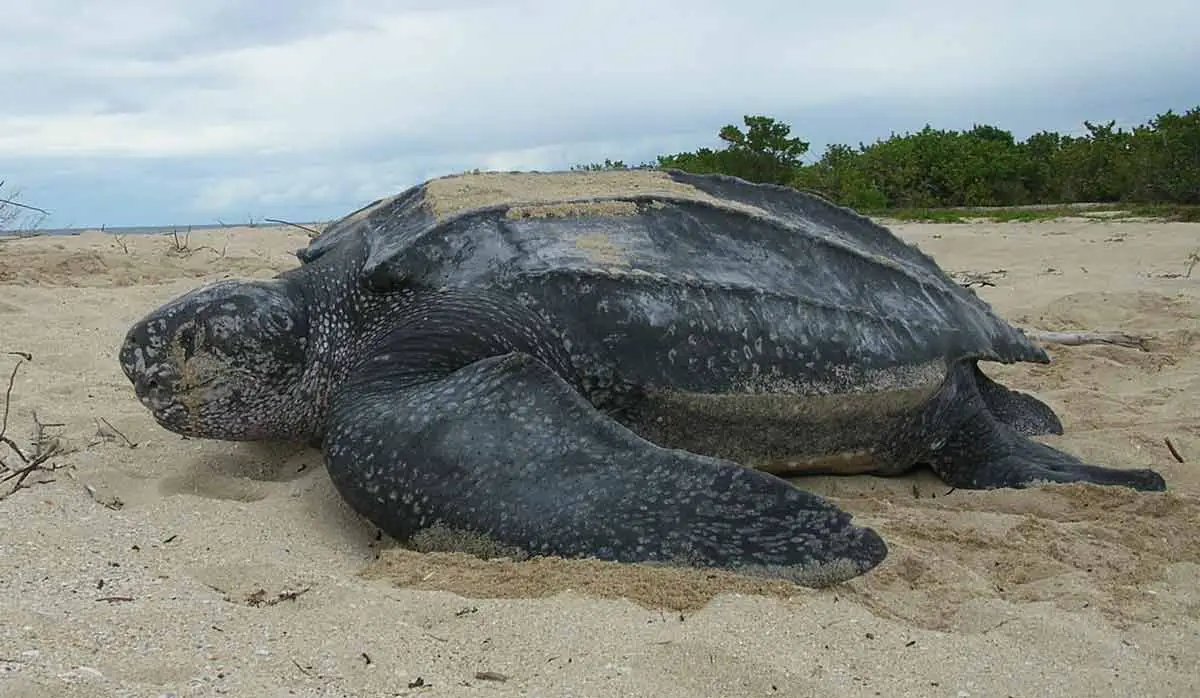
- Leatherback: Vulnerable – The main risk to a leatherback turtle is getting trapped in fishing gear, feeding on their eggs, and plastic litter.
- Greens: Endangered – Major dangers are the trade of their meat and eggs and unviable coastal development.
- Loggerheads: Vulnerable – The main hazard to a loggerhead is from fishing.
- Hawksbills: Critically Endangered – The main risk to hawksbill species is turtle shell trafficking. You can find more information on Hawksbills here.
- Olive Ridleys: Vulnerable – Principal dangers are feeding on their eggs, getting trapped in fishing gear, and unviable coastal development.
- Kemp’s Ridleys: Critically Endangered – Major perils are oil spills and coastal expansion.
- Flatbacks: Data Incomplete – Major risks are fishing, coastal development, and their eggs, and meat being consumption.
Threats
- Fisheries: Fishing habits, such as longlines, gill nets, and trawls impact them almost everywhere. The most extreme of these effects are death after entrapment, habitat loss, and food web alterations.
- Direct Take: People all over the world kill them and their eggs for food and their by-products such as oil, leather, and shells.
- Coastal Development: Coastal development messes up and ruins their habitats. This comprises both coastline and ocean bed changes. Noteworthy effects are nesting coast damage, seafloor ransacking, boat and ship traffic, construction, and changes in plant life.
- Pollution: Plastics, thrown-out fishing gear, petroleum by-products, and other fragments damage and kill this vulnerable animal through digestion and entanglement. Light pollution upsets nesting activities and is the source of hatchling death by steering them away from the ocean. Chemical impurities can deteriorate sea turtles’ immune systems, making them prone to disease.
- Climate Change: Climate change will increase the rate of dangerous weather events, which cause harm to nesting beaches. In addition, it results in other changes to their crucial habitats and basic oceanographic processes. It can influence the natural sex ratios of hatchlings and increase the probability of illness outbreaks for sea turtles.
What Can You Do to Save Sea Turtles?
- In order to save this amazing reptile, one could become a mindful and responsible seafood customer by inquiring where and how your seafood was gathered. Pick only that which is caught by methods that do not hurt or destroy turtles. Refer to sustainable seafood data networks to study about how and where your seafood is acquired.
- Get in touch with your local sea turtle stranding organization if you find one that is ill or hurt.
- Support sea turtle maintenance by getting involved. Support movements that benefit them.
What Can You Do to Protect Sea Turtle Habitat?
- Diminish marine rubbish that may trap or be unintentionally consumed by the turtles.
- Join coastal clean-ups and decrease plastic use to keep our beaches and oceans unpolluted. Litter in the ocean can hurt sea turtles and other animals that live there.
- Use reusable water bottles and shopping bags. Abstain from freeing balloons, they’ll probably end up in the ocean where a sea turtle can mistake them for prey and ingest them.
- Keep nesting beaches dimly lit and secure for the turtles. Switch off, buffer, or change the direction of lights visible from the beach. Lights confuse hatchlings and discourage females from coming onto the sands to lay their eggs.
- Do not intrude on breeding turtles, nests, or hatchlings. Join planned watches that know how to carefully witness such sea turtles.
- Remove recreational beach equipment like chairs, umbrellas, and boats at night so turtles are not turned away.
- Seal holes and knock down sandcastles before you exit the beach. They can become hindrances for nesting turtles or imminent hatchlings.
Sea Turtle Friendly Fishing and Boating Tips
- Go Slow: Sea Turtle Beneath! Sea turtles are normally found in oceans, bays, and sounds. Moreover, they move close to shore waters. Remember, turtles have to come up to the surface to breathe, and they can be tricky to detect. Boat assaults are a grave danger to turtles, so slow down and navigate around them.
- To avoid injury:
- Never leave behind fishing gear. Hooks, lines, or nets left behind in the water can entrap and kill them.
- Use barbless circle hooks.
- Reuse the fishing line and remove your trash on the coastline in trash containers.
- Move to another fishing location if they are in the area and show curiosity about your bait or catch. Don’t cast your line if they are in the area.
- Don’t abandon bait or fish leftovers into the water. Any sea turtle might link the area with food and be in danger of capture or ensnarement in hook and line gear.
- Never feed or try to feed a sea turtle. It is dangerous and unlawful!
Protection in the US
- National Laws
United States protects the Sea turtles in its waters under the Endangered Species Act (ESA). The list includes the hawksbill, leatherback, Kemp’s Ridley, and green turtle as endangered as well as the loggerhead. This title makes it unlawful to hurt, pester, or kill any sea turtles, hatchlings, or their eggs. It is similarly banned to import, trade, or transport turtles or their goods. In the United States, the National Marine Fisheries Service has authority over sea turtle conservation in the water. Also, the U.S. Fish and Wildlife Service is in charge of them on land. Other countries have their own protection regulations and rules that relate to sea turtles.
- State and Local Protection
In various states where these species nest, national rulings have been approved to safeguard the species. These regulations meet or surpass the requirements of the ESA. Florida has accepted the Marine Turtle Protection Act. It gives state agencies the authority to put in place protocols defending turtles and their habitat. Some local administrations have distributed guidelines to remove or regulate artificial beachfront lighting. It discourages females from nesting and harms hatchlings.
Conservation Goals
The dangers facing these unique animals are many and, for the most part, people are the problem. On one hand, it is extremely difficult to modify human behavior. On the other hand, at least there is optimism for eradicating risks. If they were going extinct due to biological or climatic changes, there would be very little we could do to help. Let us learn what we can do to protect this endangered marine animal resource.
Some immediate goals for protecting sea turtles include:
- Clamp down on banned worldwide trade in sea turtles and their products by imposing laws and pacts.
- Reduce the deaths caused by commercial fishing by using Turtle Excluder Device (TED) and gill net guidelines.
- Guard nesting coastal sands by creating parks and sanctuaries. Publishing guidelines combined with public education initiatives may help in creating awareness.
- Abolish disturbances at these beaches. Lessen artificial lighting, stop beach armoring, monitor beach nourishment, and prevent the impact of people on beaches.
- Put into effect national and international regulations to curtail the discarding of pollutants and solid waste into the ocean and near shore waters.
- Carry on investigation and observing activities so that the population can be examined and conservation energies can be intensive where they are most needed.
- Raise public awareness and community involvement in sea turtle protection via educational programs.
